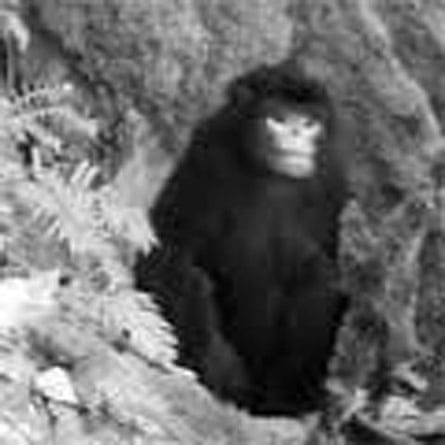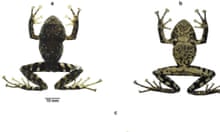A monkey which sneezes in the rain and a “walking” fish are among more than 200 new species discovered in the Eastern Himalayas in recent years.
A report on wildlife in Nepal, Bhutan, the far north of Myanmar, southern Tibet and north-eastern India has revealed discoveries in the past five years including 133 plants, 26 species of fish, 10 new amphibians, one reptile, one bird and one mammal.
The discoveries include a new bird named the spotted wren-babbler, a striking blue-eyed frog and a lance-headed pit viper snake with an ornate yellow, red and orange pattern that could pass for a piece of jewellery, conservation organisation WWF said.

Scientists learned of the snub-nosed monkey – or “Snubby” as they nicknamed the species – from locals in the remote forests of northern Myanmar, who said it was easy to find when it was raining because it often got rainwater in its upturned nose, causing it to sneeze.
To avoid the problem, snub-nosed monkeys spend rainy days sitting with their heads tucked between their knees, the report said.
Among the new fish found is a vibrant blue dwarf “walking” snakehead fish, found in West Bengal, India, which breathes air, can survive on land for up to four days and can writhe and wriggle up to quarter of a mile over wet ground between bodies of water.
But the report also warns of the threats facing the newly-discovered species, with just a quarter of the original habitats in the region still intact and hundreds of plants and animals living in the Eastern Himalayas considered to be globally threatened.
Climate change is the most serious threat to the region, while population growth, deforestation, poaching, mining, overgrazing, the wildlife trade, pollution and development of hydroelectric dams are all putting pressure on nature in the Eastern Himalayas.
Heather Sohl, WWF-UK’s chief adviser of species, said: “These discoveries show that there is still a huge amount to learn about the species that share our world.
“It is a stark reminder that if we don’t act now to protect these fragile ecosystems, untold natural riches could be lost forever.”

Dechen Dorji of WWF Bhutan said: “The discovery of 211 new species from one of the most biologically rich regions of the world is a celebration of the amazing gift of nature.
“With discovery, comes the important responsibility to continue protecting and caring for these precious gift that this world has been blessed with.”
WWF is supporting countries in the region to develop “green” economies that value nature and the services it provides to millions of people living in the Eastern Himalayas, for example through sustainable hydropower schemes and helping people adapt to climate change.











Comments (…)
Sign in or create your Guardian account to join the discussion